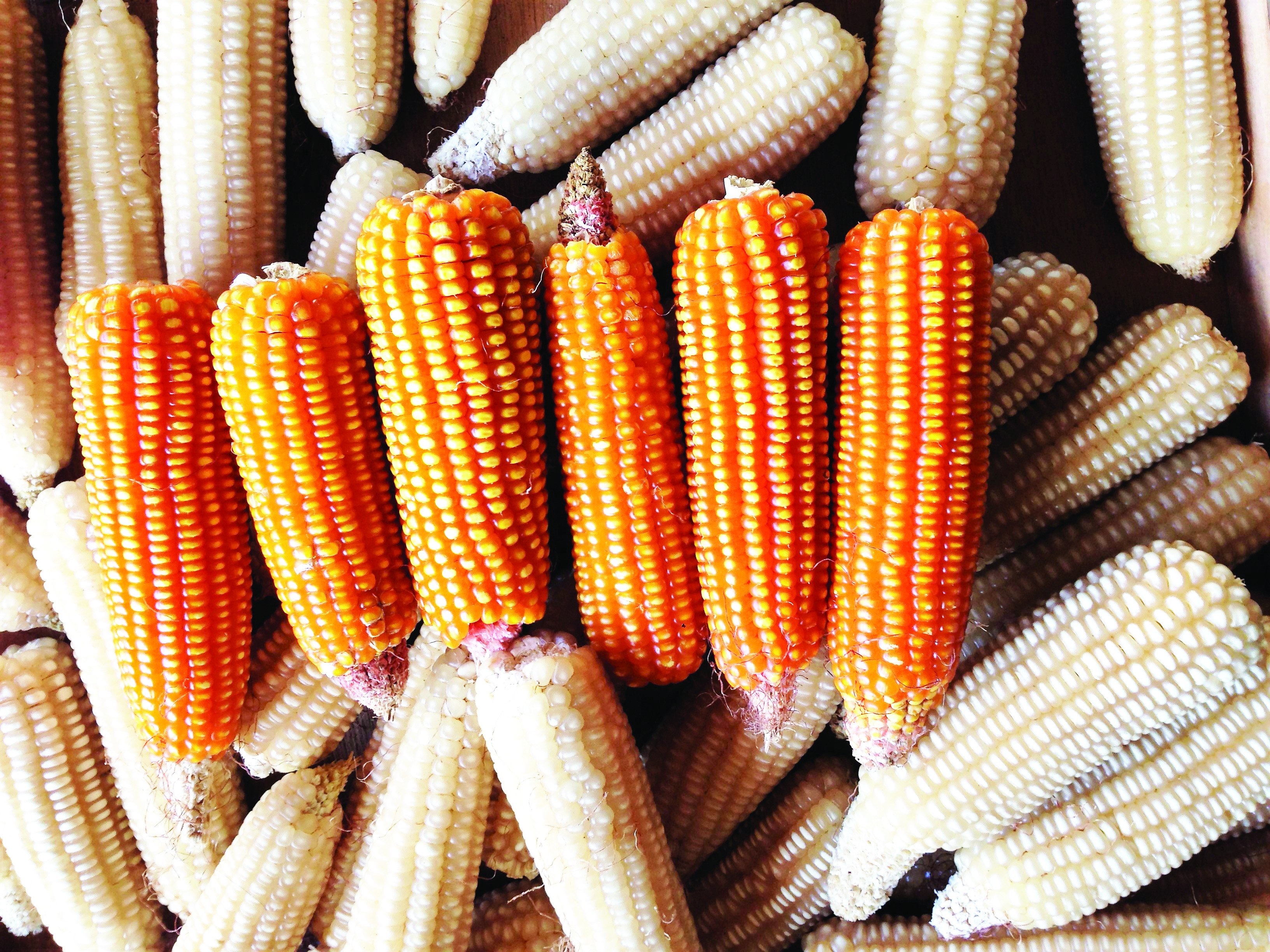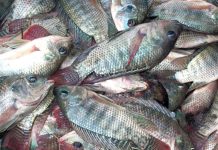
Borne of its golden ears, corn is a most welcome crop anywhere it grows. So, it’s not surprising that in the Philippines, the sight of wide and long stretches of corn tufts mantling the landscape and creating waves in the fields can evoke thoughts of food security.
In the early civilization of the West, corn was the dominant staple food. In the Philippines, corn is the second most important crop – after rice. Approximately, a third of Filipino farmers consider corn as their major source of livelihood.
As a staple food, corn is a great substitute for rice, which is consumed by 90% of Filipinos. Nutritionists claim corn, compared with rice, has more vitamin A, protein and fats. It gives the body bone-building elements such as calcium and potassium.

This is the reason why white corn is popular among the Visayas and Mindanao population. In the 1970s, during the time of Jesus Tanchanco as food minister, corn became a bumper crop and it paved the way of introducing the grain among Metro Manila consumers.
However, convincing Filipinos these days to eat corn is a “long and slow crusade” to quote the words of Dr. Artemio Salazar of the Institute of Plant Breeding at the University of the Philippines at Los Baños (UPLB).
Although corn is cheaper, it is hard to convince Filipinos to eat corn as the cereal is soon to be the staple food of poor people. So much so that most Filipino farmers corn the yellow variety which are used as feeds for animals.
“Corn is also a main ingredient of animal feeds, a thing already known to have triggered the industrial side of corn production in the livestock industry,” said an editorial of The PCAARRD Monitor, published by the Philippine Council for Agriculture, Aquatic and Natural Resources Research and Development.
Yellow corn accounts for 60% of the total corn production in the country, with white corn as the residual. “Most of the yellow corn produced is sold to the livestock and poultry feed mill industries, albeit some farmers keep a small proportion of output for human consumption in times of very poor harvest,” said a technical paper authored by Maria Erlinda M. Mutuc, Roderick M. Rejesus, Suwen Pan, and Jose M. Yorobe, Jr.
In 2018, the production volume of corn in the country amounted to approximately 7.8 million metric tons, according to the statista.com. In the same year, the production value of corn was about P109.2 billion.
It seems rosy when it comes to corn production in the country. But Filipino farmers complain of a pest that destroy their crop. Farmers report that yield losses from this pest – which feeds on the plant stem, leaves and ears even before corn is harvested – range from 30% to almost 100%.
The pest is called Asian corn borer (scientific name: Ostrinia furnacalis). “Over the past decade or so, corn borer infestation has occurred yearly with pest pressure constant to increasing over time,” said the paper entitled, “Impact Assessment of Bt Corn Adoption in the Philippines.”
Bt stands for Bacillus thuringienses, a common soil bacterium that produces its own insecticidal protein. “Bt corn was first introduced in the Philippines in 1996 on a limited trial basis only,” the paper reported. “Between 1999 and 2002, after approval from the National Committee on Biosafety in the Philippines, field trials of Bt corn were conducted in the major corn-producing areas in the country.”
In 2002, the Department of Agriculture finally approved the commercial distribution of Bt corn. This made the Philippines as the first country in Asia to commercialize Bt corn primarily in response to the Asian corn borer.
“The corn borer problem in the Philippines had devastating effect on corn production,” says Dr. Rhodora Romero-Aldemita, the International Service for the Acquisition of Agri-Biotech Applications (ISAAA) Southeast Asia Center Director. “The cost of corn went up because we had been importing. We needed to import because we needed to have feeds for livestock. So, when the (Bt corn) approval came and farmers started planting in 2003, they were then able to get hold of the technology and were able to share the information from one farming site to another because they saw the benefit is tremendous.”
Today, more and more Filipino farmers are growing Bt corn in their farms, according to the Laguna-based ISAAA. Generally, farmers planting biotech corn earn an average additional income of P7,482 per hectare during the dry season and P7,080 per hectare during the wet season, studies showed.
One of those who plant biotech corn is Edwin Paraluman, a General Santos City farmer for more than four decades who plant rice, corn and some vegetables in his farm. “I had stopped planting corn on my farm because of the damage caused by corn borer,” he said in an interview conducted by CropLife Philippines, an association of companies that help improve the productivity of Filipino farmers and contribute to food security in a sustainable way.
“But when I saw biotech insect-resistant corn and learned how the crop could resist the corn borer and increase my harvest, I was very happy to accept it,” said the chairman of the Philippines Farmer Advisory Board and coordinator of the Asian Farmers Regional Network.
When he planted his first five hectares of Bt corn in December 2003, he was one of the only two farmers planting the crop. “Many farmers were afraid to plant it because of the anti-GMO (genetically modified organism) campaigners who said the technology was not good, could cause cancer and would harm the environment,” he recalled.
That completely hanged now. More than 400,000 Filipino farmers have joined them. “The farmers have seen that this technology is good for us and it boosts our economy,” Paraluman said.
In the past, his harvest was only 3.5 tons per hectare. After planting Bt corn, it increased to seven tons per hectare. “So, it really helps me and my family,” he said.
His standard of living also changed. “I used to have a very little house and during the rainy season, where we were sleeping, the rain would come in through the roof,” he admitted. “But now, I have changed my house for a better one. That’s how technology can change our lives.”
According to him, anti-GMO groups were really very strong before he changed his method of corn production. “When I planted (Bt corn in my farm), my neighbors would say: ‘If my goat or cow eats the corn you are planting, that is dangerous.’”
Paraluman found such belief baloney. “For us farmers, we realized it was not dangerous at all,” he said. “I have eaten corn from every harvest I have made, so I now say to the community: ‘See me? If it was dangerous, then maybe after 14 years I would not be standing in front of you now. So, this is a safe technology. Why are you saying this is dangerous?’”
Bt, a common soil bacterium so called because it was first isolated in the Thuringia region of Germany, produces a protein that paralyzes the larvae of some harmful insects. Scientists, through genetic engineering, have taken the Bt gene responsible for the production of the insecticidal protein from the bacterium and incorporated it into the genome of plants. As such, the plants have a built-in mechanism of protection against targeted pests.
Aside from corn, Bt is also introduced in cotton, poplar, potato, rice, soybean, tomato, and more recently eggplant. “The protein produced by the plants does not get washed away, nor is it destroyed by sunlight,” said a briefing paper published by the Global Knowledge Center on Crop Biotechnology. “The plants are protected from the insects round the clock regardless of the situation.”
Since Bt crops are able to defend themselves against pests, the use of chemical insecticides is significantly reduced. A study conducted by the United States Department of Agriculture showed that 8.2 million pounds of pesticide active ingredients were eliminated by the farmers who planted Bt crops in 1998.
“Aside from being effective against insect pests, Bt crops have lower incidences of opportunistic microbial pathogens, such as the fungus Fusarium,” the briefing paper said. “This fungus produces mycotoxins that can be deadly to livestock and also cause cancer in humans.”
The briefing paper shares this information on how Bt operates: “When ingested by larva of the target insect, the Bt protein is activated in the gut’s alkaline condition and punctures the mid-gut leaving the insect unable to eat. The insect dies within a few days.”
It is for this reason why much research has been done to exploit the organism’s agronomic value. To date, there are more than 200 types of Bt proteins identified with varying degrees of toxicity to some insects.
Before Bt was cultured by fermentation. In fact, over the last 40 years, Bt has been used as an insecticide by farmers around the world. It is said that organic farming has benefited from it as it is one of the very few insecticides permitted by organic standards. “The insecticide is applied either as a spray, or as ground applications. It comes in both granules and liquefied form.”
Bt crops are an addition to farmers’ arsenal against plant pests. Said the ISAAA briefing paper, “With an increasing population and decreasing arable land, it is necessary to exploit all options with as little compromise to produce more crops. When used side by side with proper agricultural practices, Bt insect resistance technology can bring many benefits to crops, farmers, and consumers alike.”






